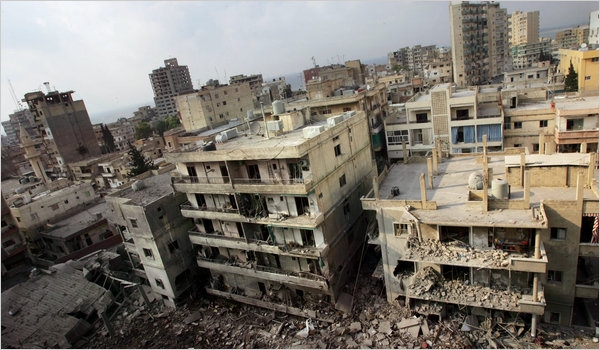The Action on Armed Violence, or AOAV, published a report detailing the devastating impact explosive weapons can have on civilian populations. Through publishing this report, AOAV hoped to shed light on the long-term effects suffered by civilians who live in areas impacted by explosive weapons used during the conflict. To analyze these effects, AOAV focused on the 1983 - 2009 Sri Lankan civil war and the Israel-Hezbollah 33-day War in 2006. In order to gather information for the report, researchers from the AOAV went to Sri Lanka in December 2017 and Lebanon in February 2018 to interview individuals who were impacted by or knowledgeable about explosive weapons in their area. There were 35 interviews conducted in Sri Lanka and 28 in Lebanon.
From 23 July 1983 until 18 May 2009, Sri Lanka was engaged in a civil war. The Sri Lankan Government and the Liberation Tigers of Tamil Eelam, also known as the Tamil Tigers, were the main warring sides of this conflict. Throughout the war, explosive weapons were used by both sides. In total, 300,000 people were internally displaced and 100,000 people were killed in provinces impacted by explosive violence. Similarly, a conflict between Israel and Hezbollah, which took place from 12 July 2006 to 14 August 2006 in Lebanon, disrupted the lives of many civilians due to the use of explosive weapons by both sides. Over 1,000 Israeli civilians were injured, over 1,000 Lebanese civilians were killed, and approximately one million Lebanese civilians were displaced.
Although these statistics are striking alone, the AOAV focused more on other impacts of explosive weapons, such as health. In the health section, the AOAV noted the increasing normalcy of hospitals being targeting by explosive weapons. During the civil war in Sri Lanka, shelling between the Tamil Tigers and the government reportedly destroyed “the last functioning hospital” in one region. The report also outlined the physical and psychological impacts explosive weapons can have on civilian populations. Blasts from explosive weapons can cause laceration, deafness, traumatic brain injury, and many other injuries with long-lasting complications. Sana Badran and Dr. Ahmad Marmar, health professionals from a hospital in south Lebanon, stated that the injuries sustained by civilians in 2006 were “a lot more complicated,” such as burns which “have a greater long-term impact than the injuries other weapons might cause.”
The AOAV also analyzed the economic impact of explosive violence. They found that the areas most impacted by violence in Sri Lanka have had the country’s lowest GDP per capita and are not experiencing the same development as Sri Lanka as a whole. Additionally, during 2006 in Lebanon, the economy shrank by 5%, despite being predicted to grow 5-6%. The AOAV noted that it is difficult to claim a direct relationship between the violence and GDP, but that it is still important to look at the two comparatively. The report also included the adverse impact of explosive violence on poverty, infrastructure, business and employment, investment, and tourism. For example, in Sri Lanka, the violence destroyed or damaged over 350,000 homes, while in Lebanon, the electricity network, water supply, and wastewater infrastructures were all significantly damaged.
Additionally, the AOAV analyzed the Environmental, Social, and Cultural impact of explosive violence. Environmentally, explosive weapons carry the capacity to destroy vegetation and kill wildlife. For instance, the Lebanese Ministry of Agriculture estimated approximately 5% of the total woodland and forest of the country was impacted by the war. In the social section, the AOAV reported on displacement crime, family and children, and education. Sri Lankan teachers described the difficulties of rebuilding schools which were destroyed by the explosive violence in the civil war, and almost 10% of all schools in Lebanon were either destroyed or damaged by the war. Culturally, the AOAV focused on the destruction of historical sites, noting that cultural sites were damaged in Lebanon and that many Tamil Tiger monuments, including a cemetary, were destroyed in Sri Lanka.
In conclusion, the AOAV emphasized the far-reaching impacts of explosive violence that surpass death and injury tolls. The report included a list of recommendations in light of their findings. These recommendations outlined steps for States and other actors to take in order to end large-scale suffering caused by explosive violence. These included a call to take political action by committing to not use explosives in populated areas, to fully realize and acknowledge the rights of victims of such violence caused by a user of explosive weapons, and to continue to research the long-term harm of explosive violence, particularly in Iraq, Syria, and Yemen.
Original report available here: https://aoav.org.uk/wp-content/uploads/2018/06/Reverberating-effects-v5.pdf




